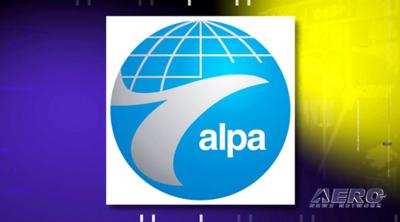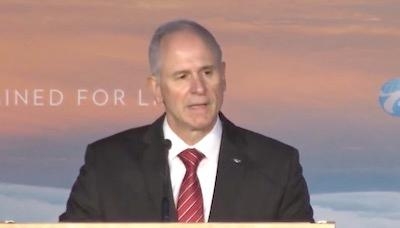Sat, Jun 06, 2020
Global Aviation Standards Pave Way for Safe Return to Air Travel
ALPA has applauded recommendations from ICAO that provide guidance to global aviation authorities on how to safely resume air travel as the world begins to rebuild after the COVID-19 pandemic, while reiterating their call for airlines to be required to adhere to established public health protocols.

The report, Take-off: Guidance for Air Travel through the COVID-19 Public Health Crisis, underscores ALPA’s efforts to establish a baseline set of uniform guidance for COVID-19 health monitoring, protection, and employee exposure notification and workplace disinfection as a key component in regaining public confidence in air travel and getting our passengers back on board.
“ALPA pilots remain committed to taking the steps necessary to keep our crews and passengers healthy in order to get the aviation economy back on a positive trajectory. Airline pilots have been on the frontlines of this global health crisis since day one, helping our industry weather this storm, and are ready to further connect communities around world as airline operations begin to increase,” said Capt. Joe DePete, ALPA president (pictured). “It is important that we remain focused on promoting public health and regaining confidence among the traveling public, while continuing to press lawmakers for mandatory compliance with these and other voluntary guidelines.”

The multifaceted report, developed by ICAO’s Council Aviation Recovery Task Force, highlighted the importance of strengthening public health measures in all aspects of the “travel experience” while minimizing operational impact. Such measures, including the establishment of baseline health guidelines related to aircraft and flight deck cleaning and disinfection and personal protective equipment for flight crews are all key recommendations that ALPA has been advocating for to protect air passengers and aviation workers from COVID-19.
“This collaborative effort by the global aviation community will enable the growth of air travel as it recovers from the pandemic. It is crucial that all countries adopt these commonsense measures so that we can create universal guidelines that further strengthen aviation public health and consumer confidence,” added DePete.
More News
A Puff Of Smoke Came Out From The Top Of The Engine Cowling Followed By A Total Loss Of Engine Power On May 9, 2025, about 1020 mountain daylight time, an experimental amateur-buil>[...]
From 2022 (YouTube Edition): Jenny, I’ve Got Your Number... Among the magnificent antique aircraft on display at EAA’s AirVenture 2022 was a 1918 Curtiss Jenny painstak>[...]
Very High Frequency (VHF) The frequency band between 30 and 300 MHz. Portions of this band, 108 to 118 MHz, are used for certain NAVAIDs; 118 to 136 MHz are used for civil air/grou>[...]
“From approximately November 2021 through January 2022, Britton-Harr, acting on behalf of AeroVanti, entered into lease-purchase agreements for five Piaggio-manufactured airc>[...]
Microburst A small downburst with outbursts of damaging winds extending 2.5 miles or less. In spite of its small horizontal scale, an intense microburst could induce wind speeds as>[...]
 NTSB Prelim: Lee Aviation LLC JA30 SuperStol
NTSB Prelim: Lee Aviation LLC JA30 SuperStol Classic Aero-TV: Curtiss Jenny Build Wows AirVenture Crowds
Classic Aero-TV: Curtiss Jenny Build Wows AirVenture Crowds ANN's Daily Aero-Term (05.30.25): Very High Frequency (VHF)
ANN's Daily Aero-Term (05.30.25): Very High Frequency (VHF) Aero-News: Quote of the Day (05.30.25)
Aero-News: Quote of the Day (05.30.25) ANN's Daily Aero-Term (05.31.25): Microburst
ANN's Daily Aero-Term (05.31.25): Microburst




